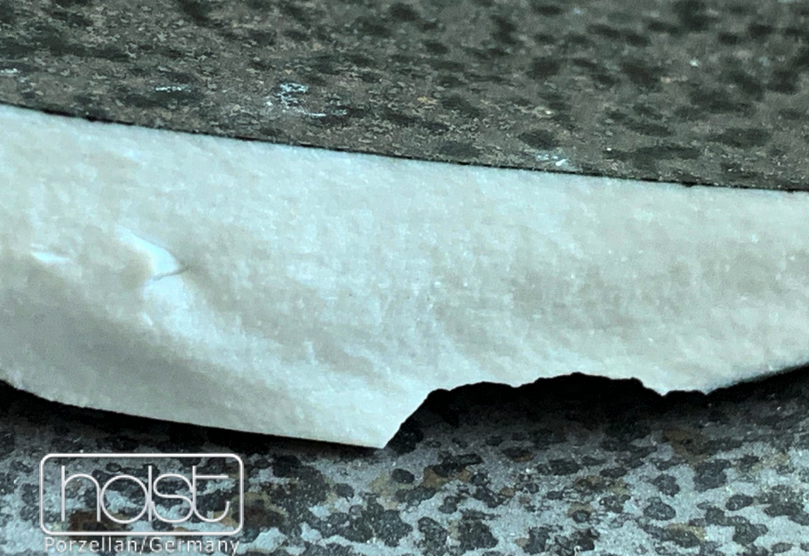Density

The term "density" in the porcelain industry and for other ceramic products refers to the physical mass density of the cullet and is the quotient of mass and body, i.e. the relationship between mass and its body.
The density is directly proportional to the porosity of a ceramic body, according to the rule of thumb: The lower the porosity, the higher the density. After shaping - i.e. during the drying and firing phases - the raw materials of the porcelain densify. The bodies shrink. The principle applies that sintering - i.e. the fusion process - increases the density of the raw materials used in the final product.
To make the "density" of porcelain more understandable to the layman, here are some comparative values.
| Density in g/cm3 | Material |
| 21,45 | Platinum |
| 19,32 | Fine Gold |
| 19,10 | Uranium |
| 10,50 | Fine Silver |
| 3,51 | Diamond |
| 3,75 - 3,95 | Alumina AL2O3 |
| 2,1 - 2,6 | Porcelain |
| 2,5 - 2,8 | Feldspar |
| 2,2 - 2,7 | Quartz |
| 2,58 | Kaoline |
| 0,19 - 2,15 | Clay |
| 1,2 - 1,9 | Rough Ceramics |
| 0,015 | Styrofoam (Polystyrene PSE) |
Viewed
